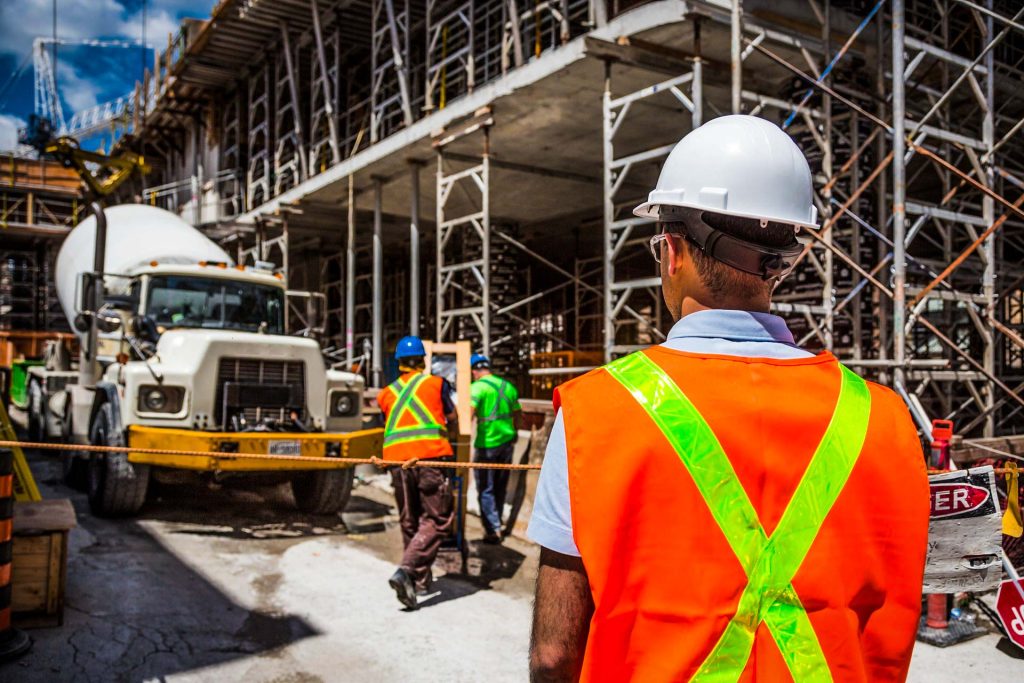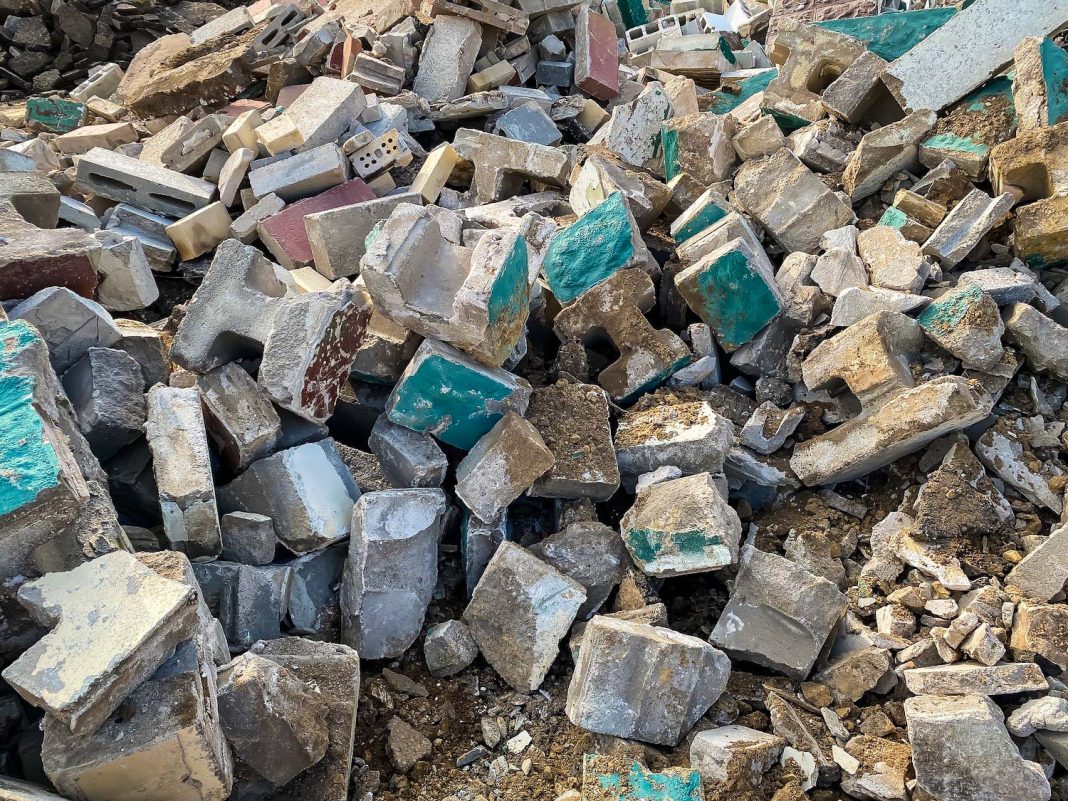Concrete. As a staple of construction, it’s everywhere in our cities. What happens when a building has served its purpose? Could we recover, recycle, and rebuild with construction and demolition waste material? Would that reduce construction’s harmful environmental impact? We wanted to know the possibilities and challenges concrete poses, and whether change is in the air. Professor Christian Glock answered all our questions on concrete, construction, carbon, and circularity.
On CityChangers.org, we look at the suitability of natural materials for building in cities. There is another option: reusing construction and demolition waste (CDW). The construction sector consumes approximately half of all primary raw resources used in Europe and generates one third of all waste across the continent. Much of this is concrete, the most widely used resource on the planet after water. So, it stands to reason that we are looking at circularity as an option for sustainable construction. Christian Glock is a construction and concrete maestro. We were fortunate enough to get his expert take on the challenges and benefits of working with waste.
Rock Around the Glock
Doctor of Engineering Professor Christian Glock studied as a Civil Engineer and holds a professorship in concrete and masonry construction. From 2017 to 2021, he led the SeRaMCo project for the German institution Technische Universität Kaiserslautern. A team from across north-west Europe investigated the scope for transforming CDW into quality concrete and cement for the house-building trade and how to establish a market for it.
Before that, while employed as managing director of the Germany-based construction company Bilfinger Hochbau GmbH, Christian worked on structural design for numerous bridges and real estate projects. The man knows his concrete!
A Wall of Waste
Christian created a thought experiment to help his university students visualise how much concrete we use each year worldwide. If we build a wall one metre thick spanning the equator, how high would it be?
Answer: 350 metres. That’s huge! And it’s increasing. “Ten, twenty years ago, it was only 100 metres.” Can we change this? Christian thinks so.

Concrete – It’s Not Set in Stone
As GDP and populations increase, so does consumption, Christian tells us. The more people we have, the more infrastructure we need, and increased wealth gives us the opportunity to build: houses, hospitals, roads, tunnels, bridges, etc. We meet this demand “by using even more material, even more concrete, even more cement, and even more reinforcement, and not thinking about resource consumption, like the lack of sand in the world, and not thinking about CO2”.
We should think about it. For every tonne of concrete made, the equal amount of carbon dioxide is released. Concrete is choking the planet.
But changing the attitudes and practices in the construction sector is complex:
Development and Equity
“China uses more than 50% of the cement,” our CityChanger reports, adding, “but you can’t blame them because they are just doing what we did last century”. Developing nations are playing catch-up with Europe and America and concrete is a big part of infrastructure building. Although a unified global legislation that penalises concrete use might help cut CO2, it would hamper economic and social progress for the global south. As Christian says, this would simply be “unfair”.
Working in Isolation
Our CityChanger points out that construction hasn’t undergone the same change towards industrialisation as many sectors. “Building is done by many, many companies.” It involves a diverse ecosystem of professions: architects, surveyors, bricklayers, electricians, plasterers, roofers, etc. In most cases, there’s a lack of coordination between them which means buildings “are not being regarded as a product”.
What Christian means is that craftspeople focus on completing their own objective without considering how it impacts or relates to that of others; “no one cares about the overall result”. Quality suffers and we might be missing opportunities for efficiency and optimisation.
Standardisation
Building standards do not encourage innovation. Quite the opposite. Christian calls them a “roadblock”. It takes a long time for emerging concepts to be tested and approved. By this time, these innovations have been surpassed by new ideas.
“Standards, which actually decide about 95 or 98, 99% of all buildings, are based on 20-year-old knowledge.”
That’s not to say building codes are irrelevant; they’re an important safety measure. But we need to acknowledge that “these regulations lead to the fact that change is always difficult”. We would benefit from more flexible attitudes from building authorities towards experimentation. Christian advocates for making CO2-management a requirement on equal footing as safety – tenders can be assessed with climate-savvy criteria.
Long-Term Outlook
After World War 2, when we needed homes built fast and resources were plentiful and affordable, there was little regard for efficiency. This leaves us with a vast, dubious concrete legacy: a building stock that’s expensive to retrofit and all too easy to trash and start again. Christian admits that, as an engineer, this used to be his go-to approach. It’s the same for any company prioritising profit margins. Recycling CDW has to be the more attractive and economically attractive option.

Construction and Demolition Waste
We have to accept concrete is here to stay a while longer. You may recall Janna Laan Lomas telling CityChangers.org that it is a finite material, not cyclical. Some disagree.
Processing CDW gives us chance to reuse former concrete, bricks, tiles, and ceramics that we get from demolishing properties. Although even this has its issues:
Downcycling Dominates
“One of the problems is what to do with the waste,” Christian notes.
In the SeRaMCo project partners’ home countries, 70% of CDW is reused, but predominantly in laying roads rather than quality construction. Christian points out that “it’s not recycling. Using it for road construction is downcycling!”. The product is of a lower quality than its parts, a symptom of how it is processed. It’s not the best use, so the gains are questionable.
Preconceptions Lead to Mistakes
At least by reusing the otherwise unwanted material in motorways, we’re extracting fewer virgin natural resources and cutting down our CO2 emissions, right? Well, maybe not.
Whether we demolish a building by force (e.g., explosives), or dismantle it carefully, we release embodied carbon. The situation is amplified by the grey energy required for preparing materials for onward use, especially for high-grade needs like housing:
“We come to the point where we have to crush a complete building into small parts, wasting huge amounts of energy to crush it, to sort it, and use water to wash it. We have already made a lot of mistakes.”
Christian continues: “And you have to transport it.” Plus, fresh cement is still needed to hold it all together, which needs to be extracted. We hear the word ‘recycled’ and assume it’s climate-friendly, but “recycled concrete doesn’t help us for the purpose of CO2”. Wearing a jumper and reducing your household thermostat would be more effective, he proposes.
Where Does That Leave Us?
Christian makes it clear that we must consider the options carefully. There’s a hierarchy to how we realistically should approach discarded construction refuse.
1. Avoid CDW
The best CDW is no CDW.
“We should try our best to avoid this disappointing situation, where we have to crush everything.”
Major infrastructure is built to last. Unlike the mobile telephone, Christian compares, which is outmoded within a few years, or software which can be improved with patches daily, buildings may remain for centuries. If we design and build with energy efficiency and future proofing in mind, we can avoid the mistakes of the past and the need to destroy and rebuild, saving on resources, time, costs, aggravation, and environmental impact.
2. Merry-go-round
There’s another way we can avoid unwanted, unplanned dismantling and rebuilding: incorporate it into the design.
Build modular, like Lego, our expert suggests. “It’s not recycling. Circular means we make slab systems, wall systems you can build apart again. And it can be in wood, can be in concrete, we have to optimise.”
We’ve got plenty more information on modular construction on CityChangers.org. Check out our articles about Modomo and COMMOD House for details.
3. Recycling
Only after these first two options are dismissed should we turn to recycling. Because of the trouble with processing material – sorting, crushing, washing, grinding, packaging, transporting, and mixing – this does not help in our fight against climate change. However, it does cut down on unsightly waste and landfill: up to 1 million tonnes by 2026, it’s predicted.
It is also realistic. Christian suggests not aiming for using 100% recycled materials. A quarter would already be a vast improvement: a share of “20-25% recycled material mixed with new concrete, that would be fine. And then everything would get a bit better”.
Recycling CDW in a Nutshell
Detractors of recycling concrete might have a point. It isn’t an easy option. Nor should it be our first. And it isn’t some magical sustainability solution to the construction sector’s propagation of carbon emissions.
However, it does give us chance to spare the extraction of natural resources and cut down on the detritus going to landfill or blighting our city streets. We’ve got such an ample source of construction and demolition waste that it makes a great deal of sense to reuse it. If we are clever, this could spell a sweeping change for how we build.
For a bit of further reading, we recommend you check out our article about SeRaMCo for details about the project’s methodology and discoveries.


